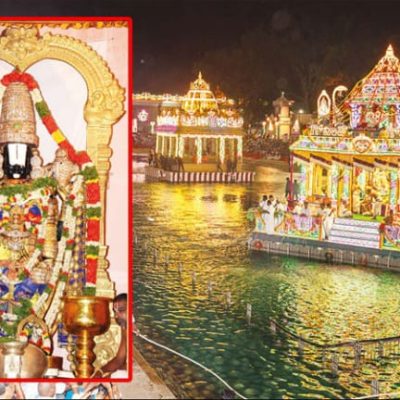Kuranganilmuttam Sri Valeeswarar Temple, Thiruvannamalai

Address
Kuranganilmuttam Sri Valeeswarar Temple, Mamandur Via Cheyyaru Taluk, Thiruvannamalai District, Tamil Nadu – 631 702. Phone: 07299904344, 09445642409.
Diety
Sri Valeeswarar / Sri Koyyamalarnathar Amman: Valaiyammai
Introduction
Kuranganilmuttam Valeeswarar Temple is a Hindu temple located at Kuranganilmuttam in Tiruvannamalai district, Tamil Nadu, India. The presiding deity is Shiva. He is called as Valeeswarar. His consort is known as Irayarvalai Ammai. Thiru Kuranganilmuttam is on the Kanchipuram to Vanthavasi route. After travelling about 10 kms from Kanchipuram, you can reach village Thusi and from here take a diversion road to Kuranganilmuttam. The temple is at a distance of about 2 kms from Thusi. This is one of the 276 Devara Paadal Petra Shiva Sthalams and 6th Shiva Sthalam in Thondai Nadu Theertham (Holy water) Kakkai Madu Theertham, Vali Theertham Sthala Vriksham (Sacred Tree) Elandhai
Puranic Significance
The temple is situated on the southern bank of Palaru river and it is believed to have been built by Pallava King Mahendra Verman in 637 CE. The legend is that once Vali (the monkey king of Kishkindha), Indhran (the king of the celestial gods) and Yama (the lord of death) were cursed by sages for their wrong doings and were made to take the forms of a monkey, a squirrel and a crow respectively.They went to Mount Kailash and prayed to Lord Shiva to seek his blessings and to request Lord Shiva to restore them to their original forms. Lord Shiva directed them to visit this place (Kuranganil Muttam) and offer their prayers. When they came to this place and worshiped Lord Shiva, he graced them with his dharisanam and absolved their sins. Lord Shiva stayed in this place as a Swayambumurthy.At Kuranganil Muttam Yama was in the form of a crow before worshipping Lord Shiva. He scratched the land with his beak and created a spring. He took bath in that spring, took water for lord’s abishekam from it and offered it to the lord. The spring was made in the shape of a new moon (semi-circular) surrounding the temple on three sides while the lord is seated on a rock on the other side. This spring is called “Kakkaimadu theertham” and “Vayasamadu theertham” – (Crow meaning Kakkai / muttam in Tamil and Vayasam in Sanskrit). Vali was an ardent Shiva devotee. When he came to worship the Lord Shiva here, he did not want to pick the flowers by hand but instead, he shook the tree in order to make the flowers fall on the Lord directly. The lord here is also known as “Koyyamalar Nathar” referring to the fact that the flowers that were offered to him were untouched by hands. “Koyya” meaning untouched and “Malar” meaning flower in Tamil. Saint Thirugnanasambanthar in his pathigam on Lord Shiva here also mentioned the lord as “Koyyamalar Chudi” (in 8th Stanza).The Tamil names of monkey, squirrel and crow are “Kurangu”, “Anil” and “Muttam” respectively. Hence the place gets the name, “Kuranguanil Muttam”. Also since Vali is believed to have worshipped Lord Shiva here, the lord here is named “Valeeswarar”.
Beliefs
Yama is considered to be the presiding lord of Planet Saturn. Those seeking relief from ill-effects of this planet (Sani dosham) can worship Lord Shiva here. It is believed that by worshiping Lord Shiva here devotees are relieved of sins and are blessed with wisdom and knowledge.
Special Features
Idols and shrines of Lords Vinayakar, Murugan with his consorts, Kasi Viswanathar and Vishalakshi, Durgai, Chandikeswarar, Mahavishnu, Brahma, Dakshinamurthy, Sapthamathars, Suryan, Navagrahams, Bairavar, Nalwars can be seen in the corridors. Separate idols for Saint Thirugnanasambanthar and Saint Sekkizhar are also present. It is pertinent to note that in Indian mythology even birds and animals are depicted as having faith in Lord Shiva. There are also references where they have attained salvation through their penance. This has been substantiated by Saint Sundaramurthy Nayanar in his Pathigam (6th stanza) rendered at Thiruppunkur. Goddess Irayar Valai Ammai graces from a separate shrine facing west. Vali, Indira and Yama are believed to have worshiped this goddess before worshipping the Lord. They are also believed to have sought her help to negate the effects of the curse and revert back to their original forms. The goddess is believed to have yielded to their request. “Valai” in this context can be translated as “yielding”. This is one of the reasons behind the name “Irayar Valai Ammai”. Saint Thiruganasambanthar had also praised the goddess as “Irayar valai” in his hymns. “Valai” in Tamil also means bangles. Married women and expectant mothers offer bangles to the goddess before wearing them with the hope that they would be blessed with healthy children and their deliveries would be safe. They also pray to the goddess for relief from “Balarishta dosham”. “Bala” means children and “arishta” means illnesses. Balarishta dosham are illnesses that afflict the new born child. They are caused due to specific planetary positions or combinations present at the time of birth of the child. The ill-effects of this dosham can be seen for many years. It is said that on specific days during the Tamil month of Chithirai (April-May) sun rays fall directly on the lingam in the sanctum sanctorum. Beautiful stone engravings depicting these animals worshipping the lord can be seen at the entrance wall of the temple.
Festivals
Lakshadeepam (one lakh lamps) on Tirukarthikai in the Tamil month of Karthikai (November-December), Shivarathri in the Tamil month of Masi (February-March) and Annabishekam in the Tamil month of Aippasi (October-November) are the main festivals celebrated in this temple. Pradosha Pooja is regularly observed in a grand manner.
Century/Period/Age
1000-2000 years old
Managed By
Hindu Religious and Charitable Endowments (HRCE)
Nearest Bus Station
Kuranganilmuttam
Nearest Railway Station
Thiruvanamalai
Nearest Airport
Puducherry









